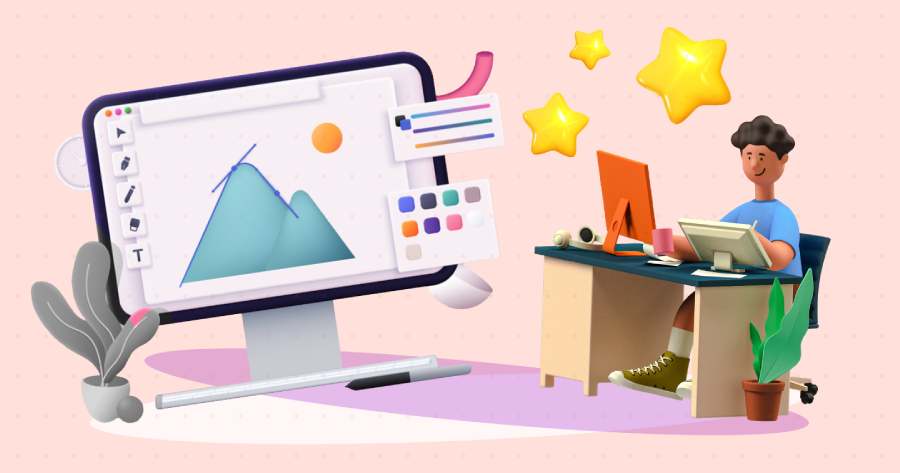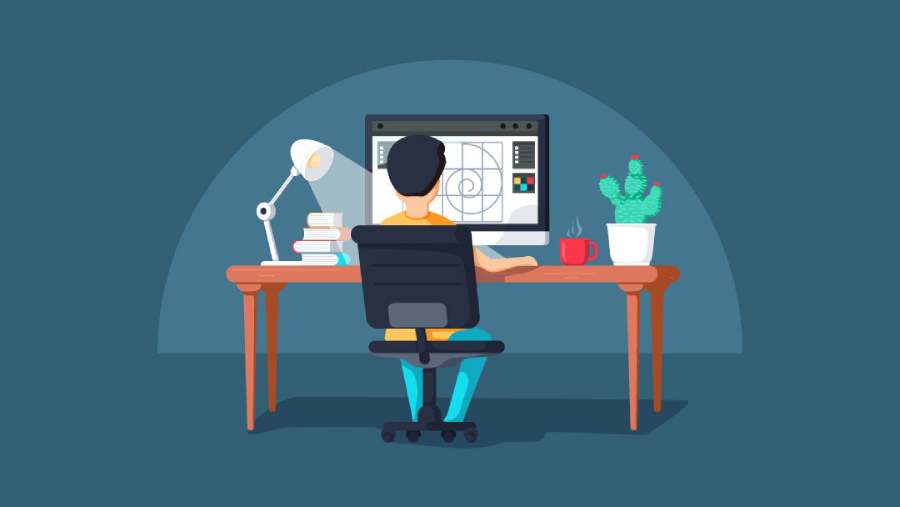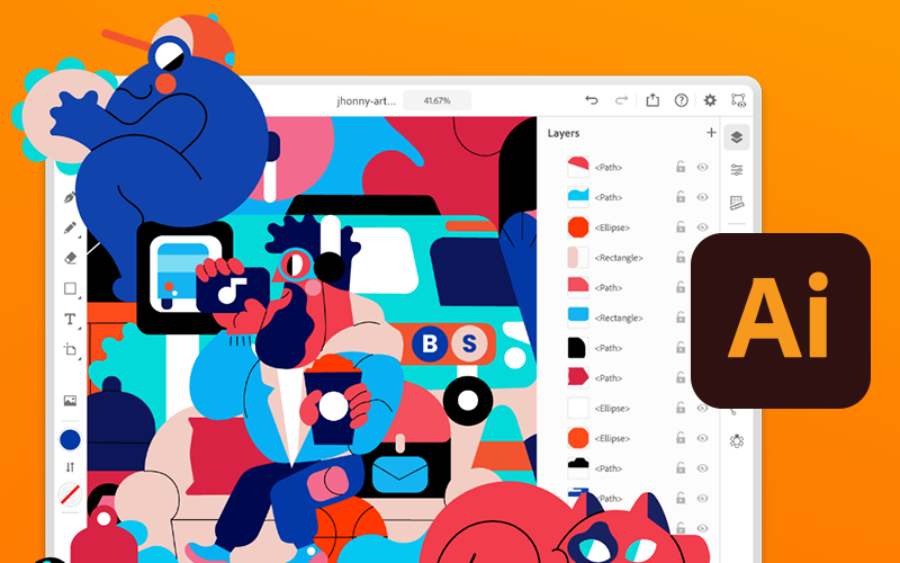Best Selling Products
Discover the Essential Skills Young Designers Need to Master From Day One
Nội dung
- 1. Beginner's Guide for Young Designers: Essential Basics
- 1.1. Understand the basic principles of design
- 1.2. Get familiar with popular design tools
- 1.3. Developing aesthetic and creative thinking
- 1.4. Learn how to work with customers and teammates
- 1.5. Be persistent and never stop learning
- 2. Golden Advice for New Designers
- 2.1. Understand the nature of design work
- 2.2. Invest in basic skills and knowledge
- 2.3. Constantly seek inspiration and expand creative thinking
- 2.4. Listen, learn and accept feedback
- 2.5. Building a network and personal brand
- 2.6. Always persevere and don't be afraid of failure
- 3. SADESIGN Specializes in Providing Reliable Modern Design Software
- Conclude
With passion and perseverance, you will not only create beautiful works but also convey meaningful values and make your own mark in this competitive design world. Join SADESIGN to discover the essential skills that young Designers need to master.

Design is a never-ending journey where you always need to learn, create and adapt. For young designers, building a solid foundation from basic knowledge is the key to going further on the career path. With passion and perseverance, you will not only create beautiful works but also convey meaningful values and make your own mark in this competitive design world. Join SADESIGN to discover the essential skills that young Designers need to master.
1. Beginner's Guide for Young Designers: Essential Basics
Design is not just a profession but also a journey of endless discovery and creativity. For young designers just starting out, building a solid foundation is the most important thing to build a sustainable career. However, the starting path is not always easy, because it requires a combination of basic knowledge, creative thinking and practical skills. Below are the factors that cannot be ignored when starting a journey in the field of design.
1.1. Understand the basic principles of design
Before diving into complex tools or software, the first thing that young designers need to master are the basic principles of design. This is the foundation that helps you create balanced and harmonious works. Concepts such as balance, proportion, emphasis, and negative space are factors that determine the quality and aesthetics of a product.
A good designer is not someone who knows how to use many effects or complex techniques, but someone who understands how to combine elements appropriately to convey the message most effectively. Spend time studying design theory documents and constantly practice to apply them to real work.

1.2. Get familiar with popular design tools
To bring your ideas to life, you need to master digital design tools. Software like Adobe Photoshop, Illustrator, Figma, or Canva are popular and useful choices in the industry. Each software has its own advantages, supporting you in areas such as photo editing, graphic design, or prototyping.
Don’t stop at just learning how to use the software, though. Dig deeper into how these tools work to get the most out of them. And don’t be afraid to experiment and learn from new design platforms, as technology is constantly evolving and always offers unique creative solutions.
1.3. Developing aesthetic and creative thinking
Creative thinking is an important factor that helps you become a unique and outstanding designer. To develop this thinking, constantly explore new design trends, learn from famous designers, and broaden your perspective by admiring art, photography, architecture, and fashion.
In addition, it is also important to learn more about user psychology, especially if you work in the field of interface design (UI/UX). Understanding the desires and behaviors of your target audience will help you create design products that are not only beautiful but also bring good experiences to users.
1.4. Learn how to work with customers and teammates
Design is not always a solo endeavor. You will often be working with clients, teammates, or other departments on a project. Therefore, communication skills and the ability to work in a team are essential.
Learn to listen to others and express your ideas clearly. At the same time, you need to know how to receive and respond to feedback positively. Effective collaboration not only helps you complete projects better, but also opens up many opportunities to learn and develop new skills.

1.5. Be persistent and never stop learning
The road to becoming a professional designer requires perseverance and constant learning. Don’t be afraid to fail, as every mistake is a valuable lesson. Join design communities, seek advice from experts, and always keep the spirit of improvement.
Also, don’t forget to stay up to date with the latest trends in the industry, from design styles, technology, to more efficient working methods. The design world changes every day, and constantly developing yourself is the only way to stay relevant and ahead in this field.
2. Golden Advice for New Designers
Entering the world of design is the beginning of a journey full of creativity, challenges and opportunities. But to succeed in this field, it requires not only talent but also the right direction, a progressive spirit and effective working strategies. For young designers just starting out, learning from valuable advice will help you build a solid foundation and overcome initial difficulties. Below are some practical tips that every young designer should remember.
2.1. Understand the nature of design work
Design is about more than just looking pretty; it’s about solving problems. Whether you’re designing a logo, a user interface, or a poster, your primary goal is to communicate your message in an effective and engaging way. To do this, you need to understand your target audience, what your client wants, and how your work will work in a real-world context.
Always ask yourself: What value does this piece bring? What problem does it solve for the user or customer? When you think this way, you’ll be well on your way to creating designs that are both beautiful and useful, making a lasting impression.

2.2. Invest in basic skills and knowledge
No success comes without hard work. Mastering the fundamentals of design, such as composition, color, typography, and aesthetics, is the first and most important step. This is the foundation that will help you create high-quality design products.
Also, master popular design software like Adobe Photoshop, Illustrator, Figma, or other creative tools. You don’t need to learn them all at once, but start with software that fits your field, like graphics, UI/UX, or branding.
2.3. Constantly seek inspiration and expand creative thinking
Inspiration is the fuel that fuels every designer’s creativity. To stay inspired, keep exploring new trends, look at the work of famous designers, and seek diversity from other fields such as art, architecture, photography, or even nature.
Also, don’t be afraid to experiment with new and unconventional ideas. Creativity often comes from stepping out of your comfort zone and asking, “What if…?”
2.4. Listen, learn and accept feedback
One of the biggest challenges for young designers is learning to accept feedback from clients or colleagues. Sometimes, feedback can be overwhelming, but it can also be an opportunity for you to improve.
Be an open listener and don’t be afraid to ask questions if you need clarification. At the same time, don’t forget to keep your own personality in your design, because that’s what makes you different in the eyes of others.

2.5. Building a network and personal brand
Design is a field that requires networking. Joining design communities, attending conferences, or collaborating with other creatives will help you gain valuable experience and expand your career opportunities.
Also, start building your personal brand early. A professional portfolio that reflects your style and skills is an important tool to impress clients and employers. Take care of online platforms like Behance, Dribbble, or a personal website to showcase your work and style to the world.
2.6. Always persevere and don't be afraid of failure
The road to becoming a professional designer is never easy. You may encounter difficult projects, demanding clients, or moments when you feel like you’re running out of ideas. But don’t let these challenges discourage you.
Every failure is a valuable lesson, helping you grow and get closer to your goals. The important thing is that you always maintain your passion, keep learning and keep trying every day.
3. SADESIGN Specializes in Providing Reliable Modern Design Software
SADESIGN is proud to be the leading provider of high-quality design software, providing optimal creative solutions for everyone, from professional designers to beginners. With the motto "Quality goes hand in hand with convenience", we bring modern, easy-to-use software, supporting a variety of fields such as graphic design, video editing, 3D modeling, and more. Not only providing powerful tools, SADESIGN is also committed to accompanying customers through dedicated consulting and support services, helping to maximize work efficiency and save time. Choosing SADESIGN is choosing a trusted companion on the journey of unlimited creativity.
Conclude
As a young designer, you are facing an exciting yet challenging journey. With careful preparation, a spirit of continuous learning and perseverance, you will not only conquer the initial difficulties but also build a solid and promising career in the design industry. Always believe in your own abilities and constantly innovate to make your own mark in this colorful world.












































